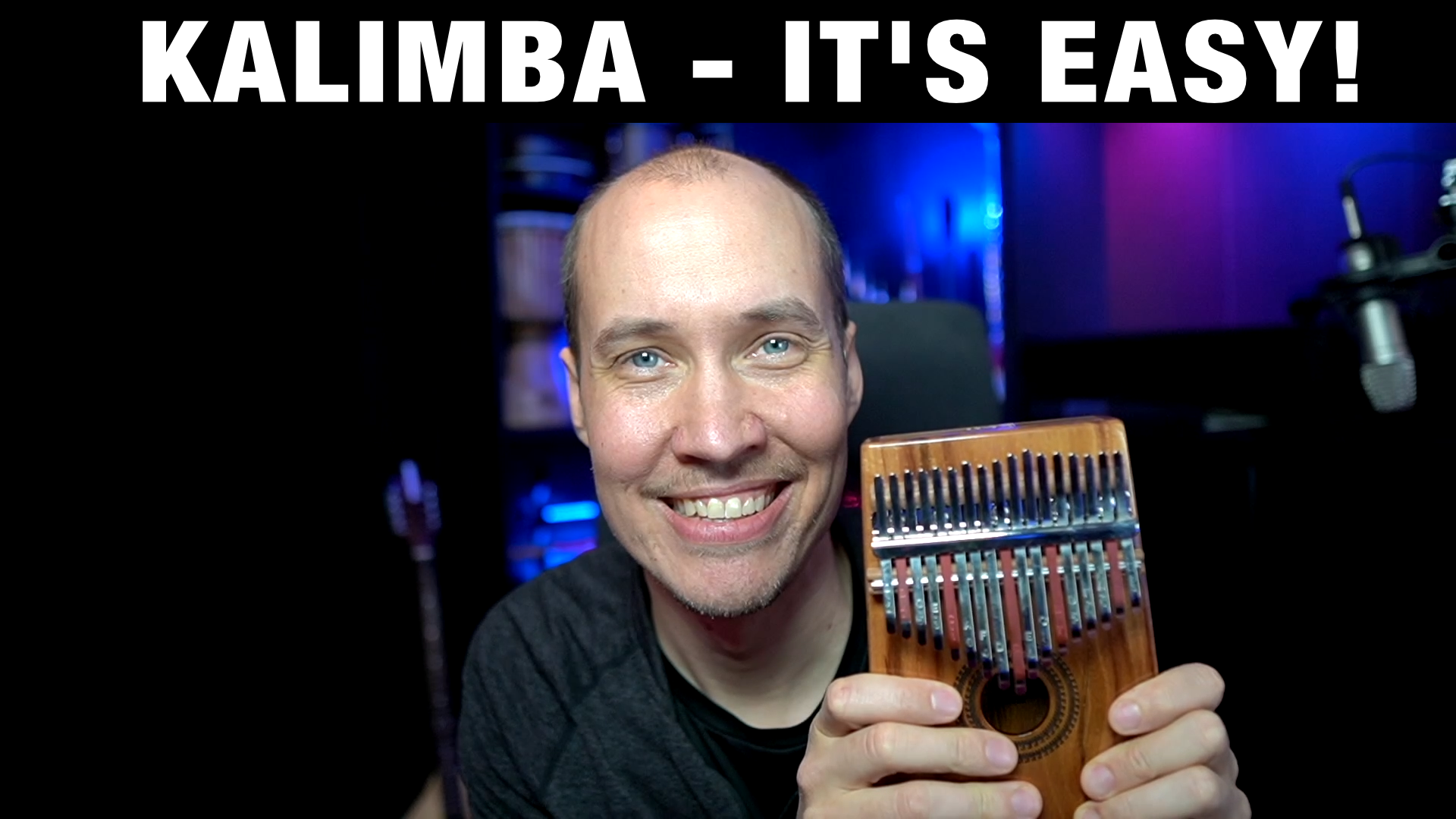 What is a Kalimba?
What is a Kalimba?
The kalimba is a small instrument with metal tines, that you pluck with your fingers in order to play notes. It is sometimes referred to as a “thumb piano”, since most people play it with their thumbs.
Is the Kalimba Easy to Play?
Yes it is, in fact it is one of the easiest melodic instruments you can learn!
The main reason for this is that every note will always sound good (like a piano) so you don’t have to get the frustrations you get learning a violin (screechy noises), the guitar (fret buzzing etc) or the recorder (squeaky notes).
You simply pluck the metal tines for each note you want to play, and the result is a beautiful shimmering bell like sound.
In almost all cases the Kalimba is a diatonic instrument (there are a few chromatic ones available), and this means that you already have all notes of a scale. Most often it will be tuned to the C Major scale, which is also the same notes as the relative A Minor scale.
So by transposing the song to C Major or A Minor, you will be able to play almost all songs, as long as they stick to the notes of the key.
Most often the tines themselves will also be marked with the note name, and number of the scale. Plus sometimes there will be color coding on for example the root key to help you further.
The only thing that will take some time getting used to, is the unique layout of the notes of a Kalimba. Where the lowest note is the middle tine, and then the note sequence goes outwards, but jumps from left to right, for each note.
How do you Play Harmonies on the Kalimba
The unique layout of the notes of a Kalimba may be a bit confusing at first for playing melodies. But this “every other note” design makes harmonies super easy to play.
Because the tines just next to each other will be in harmony. From the low note to the right you will get the 1, 3, 5, 7 etc. of the sequence in the scale. And the opposite is true when starting from the low note and going left instead.
So you can even easily play chords by plucking 3 or more tines, or even arpeggios or glissandos by pulling your thumb to the right (or left) over several tines.
Why do some Kalimbas have a hole?
The hole and hollow body serves the same function as on a guitar, it adds resonance and natural reverb to the sound. The Kalimbas with this design will therefore be a bit louder, and have more sustain and depth in the sound.
Do you play a Kalimba with your Nails?
Well you can actually choose, I don’t have any finger nails as I play piano, guitar and other instruments where they are in the way. So I simply use the flesh on my thumbs to play my Kalimba.
But if you have finger nails you can get a more sharp and focused sound, just like you get on a guitar if you have nails or a pick, instead of playing with the soft parts of your fingers.
How many Notes does a Kalimba have?
It depends on the size and number of tines. A usual size is with 17 tines, which means 17 specific pitches.
A standard diatonic Kalimba most often starts on C as the lowest note (tuned to C Major), and with 17 tines you can play 2 full octaves in that key + 2 more notes.
How do you Tune a Kalimba – Is it Easy?
Yes it is very easy, as long as you have a tuner (or tuner app). You should get a tiny hammer when you get your Kalimba, which you use to tune it.
The tuning depends on the length of the tines in relation to the small metal bar that goes across them all.
You tune the tines by simply and carefully knocking with that tiny hammer on either side of each tine. Knock it towards you to lower the pitch, and away from you to raise the pitch.
What is the Standard Tuning for a Kalimba?
In most cases it will be tuned to C Major, which are the same notes as A Minor. So you can play songs in both Major and Minor, as long as you transpose them to those keys.
Can you Tune a Kalimba to a Different Key?
Yes you can, you simply use the standard tuning method (the tiny tuning hammer to extend or decrease the length of the tines), and you overdo it until you get the note up or down to the next one.
For example: if you want to tune your Kalimba to D minor instead of the standard C Major, you need to lower the B to Bb.
So simply use the tuning hammer and carefully knock on the tine on the opposite side of the kalimba, so it extends towards you, until your tuner says the note is now Bb.
Kalimba vs Mbira – What’s the Difference?
The Mbira is the original instrument, dating back 1000’s of years ago, in Zimbabwe (Africa). The Mbira is bigger, and has a double row of tines.
The Kalimba is a modern adaption of the Mbira created in the 1960’s, but with a single row of diatonic tines which makes it much easier to play.
